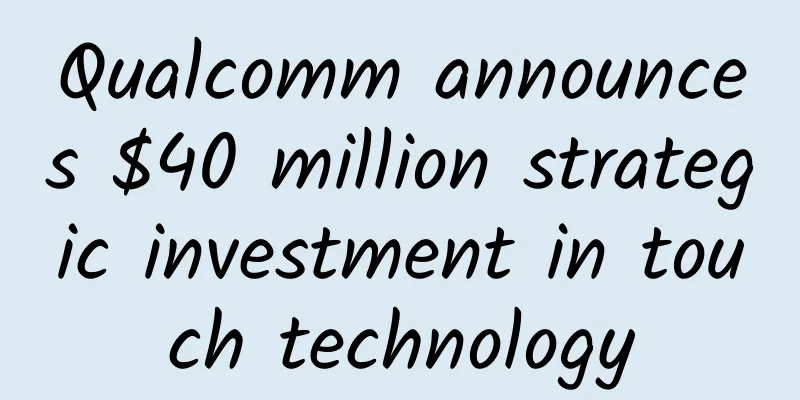Foxconn begins to come to the fore. What kind of game is Terry Gou playing?

|
Since Foxconn acquired Sharp, every decision made by Sharp has attracted much attention from its new owner Foxconn. The acquisition of Sharp is just one part of Foxconn's search for upstream terminals. Looking at a series of moves made by Foxconn in recent years, whether it is the acquisition of Sharp, the competition for Toshiba's flash memory business, or the continuous news of investment and construction of factories in the United States, all of these have made the world's largest foundry manufacturer step forward from the back of the industrial chain. Foxconn's diversified layout is not only a call to get rid of the problem of a single foundry industry line, but more of a desire to establish a self-service brand and transform into a service technology company. Regarding Foxconn's frequent layout, home appliance industry observer Liu Buchen believes that this is Guo Taiming's hope for a full industrial chain strategic transformation from "Hon Hai of manufacturing" to "Hon Hai of distribution." Crazy layout Today, Sharp has shed its Japanese corporate identity and joined the Hon Hai (Foxconn's parent company) family, which is run by Terry Gou. This "marriage" took four years to get used to, and at the same time, it also allowed Terry Gou, who was over 60 years old, to abandon the joy of family life and embark on a "second spring" of entrepreneurship. Sharp lost about 25 billion yen (about 228 million U.S. dollars) in fiscal 2016, and its operating profit is expected to increase by 44% year-on-year to 90 billion yen (about 821 million U.S. dollars) in 2017, and finally achieve a profit of 59 billion yen (about 538 million U.S. dollars). Behind these achievements, it is proved that Sharp has transformed from a strategic defensive to a strategic offensive since Foxconn took over. After announcing its return to the Chinese market in May this year, Sharp released a new series of AQUOS LCD TVs on June 6, which was the first time that Foxconn and Sharp launched new TVs after their marriage. At the same time, this also means that Sharp has returned to the Chinese market. At the beginning of this year, Sharp announced that it would increase its global TV shipments in 2017 from the original plan of 10 million units to 14 million units. Making profits quickly is the primary task for Terry Gou when he takes over Sharp. But for Terry Gou, his expectations go beyond that. "I want Sharp to make profits as soon as possible, not only because I have already acquired Sharp, but also because I want to make up for Foxconn's shortcomings in its own brands as soon as possible through the rapid revival of Sharp." Liu Buchen, an observer of the home appliance industry, said in an interview with a reporter from the Daily Economic News. It took four years and tens of billions of dollars to acquire Sharp. Guo Taiming's enthusiasm for acquiring Sharp is almost proportional to his hope for Foxconn's transformation. In other words, Guo Taiming needs Sharp as a locomotive. When Foxconn acquired Sharp, Guo Taiming said that he hoped to use Sharp, a well-known brand that has been established for hundreds of years, to build Foxconn into a respected innovator of high-tech consumer electronics products. It is worth noting that in May 2016, Foxconn acquired Nokia's feature phone business for $330 million. "This transaction is FIH Mobile (a subsidiary of Foxconn) acquiring the manufacturing, sales and distribution departments of Microsoft's mobile phone business. For Foxconn, it can immediately occupy Nokia's professional sales team and distribution department's sales platform and channels in 40 to 50 countries around the world, paving the way for Foxconn to transform into a service technology company." Tong Wenxin, former chairman of FIH Mobile, told the media. The pace of buying and buying has not stopped. On June 4, 2017, Guo Taiming told the media that the company will join hands with Apple and Amazon to bid for Toshiba's memory chip (flash memory) business. However, at present, this acquisition may be out of the game. According to a report by Japan's Kyodo News on June 24, Toshiba is expected to sign a formal contract with the preferred negotiating party, the US-Japan-South Korea consortium, on June 27 to sell its semiconductor subsidiary Toshiba Memory. In addition to enhancing the brand and technology of consumer electronics products, Terry Gou has long extended his reach into areas such as shared travel, e-commerce, cloud computing, robotics, artificial intelligence and financial services, making a diversified layout. As the world's largest foundry, Foxconn has been moving from the back of the industry chain to the front by successively laying out the downstream terminal market and the Internet market. Each layout is a move, how will the final chess game turn out? "Now Foxconn's development model is actually more inclined to Samsung's development model." Liu Buchen believes that in the future, Foxconn will no longer rely on OEM alone, but will rely on OEM and hardware manufacturing to walk on two legs. Profitability Dilemma Earlier this year, Foxconn's parent company Hon Hai announced its full-year revenue for 2016, which was NT$4.35 trillion (about US$136.38 billion), a 2.81% decline from 2015. This is the first time that Hon Hai's revenue has declined since its listing in 1991. Judging from the monthly data, except for the third quarter which saw a year-on-year increase of 2.22%, the remaining quarters all saw declines to varying degrees. The biggest reason for the profit decline is Apple. As of now, Apple is Foxconn's most important customer, contributing about half of its revenue. As an important role in Apple's supply chain, Foxconn's iPhone shipment fluctuations are directly reflected in its revenue and profits. In the second quarter of 2016, Hon Hai saw a decline in both revenue and profit. The financial report shows that due to the decline in iPhone sales in mature markets, Hon Hai's net profit in the second quarter ending June 30, 2016 was NT$17.7 billion, a 31% decline from NT$25.7 billion in 2015. "For Foxconn Group, the single horizontal OEM industry line and the vertical over-reliance on orders from a single large company such as Apple have made it want to get rid of its dependence on Apple's foundry business." Industry observer Hong Shibin said in an interview with the reporter of "Daily Economic News" that whether it is the acquisition of Sharp or the bidding for Toshiba's flash memory business, it is just a link in Foxconn's industrial chain. The previous acquisition of Sharp was based on Sharp's excellent LCD panel technology, so as to develop downstream mobile phones, TVs and other terminal independent brand markets, and the acquisition of Toshiba means that Foxconn wants to take this opportunity to enter the flash memory business. If Foxconn takes over Toshiba's flash memory business, it can obtain lower raw material procurement costs for its mobile phones, smart TVs and other terminal equipment that require flash memory chips. In addition, facing the rising upstream costs such as labor costs and raw material costs, Foxconn's overall performance growth is facing huge pressure, and Foxconn is also transforming its production technology. As early as 2011, Terry Gou revealed that they would deploy 1 million robots in factories in the next few years. How to break out of the Red Ocean? Foxconn's strong pursuit of downstream terminals is to combine its own supply chain advantages, but it is worth noting that the brands it has acquired and the fields it wants to enter are all red ocean markets with full competition. How to break through in the red ocean is a problem that Foxconn needs to face up to. The most typical example is Foxconn's layout in the mobile phone field. "After Foxconn took over, Sharp launched new mobile phones, probably because mobile phones were already included in Sharp's original business scope. As for Nokia mobile phones, similar to Lenovo's acquisition of Motorola, it may be more because of Nokia's image in the minds of consumers." Liu Buchen said. Recently, the China Academy of Information and Communications Technology released the "2017 May Domestic Mobile Phone Market Operation Analysis Report", which showed that in May, the domestic mobile phone market shipments were 37.37 million units, a year-on-year decrease of 25.5%; 127 new models were launched, a year-on-year increase of 8.5%. From January to May, the domestic mobile phone market shipments were 197 million units, and 468 new models were launched, down 5.9% and 25.1% year-on-year respectively. When Sharp launched its new mobile phone, Luo Zhongsheng, general manager of Sharp's mobile phone business, said that there was still room for the market. However, Wang Yanhui, secretary general of the China Mobile Alliance, said in an interview with the National Business Daily that "the domestic market has been determined, and Sharp has just returned to China. It will be difficult for it to rise in the short term." Foxconn is eager to help Sharp, a brand in the midst of a competitive red ocean, get rid of the pressure of losses, but is it advisable to increase sales at a low price? "For the red ocean fields of mobile phones and TVs, the only way for Foxconn to break through is to carry out technological innovation and launch new products. However, how to maintain the original brand's complex in the hearts of consumers and launch disruptive products is something Foxconn needs to think about carefully," said Liu Buchen. As a winner of Toutiao's Qingyun Plan and Baijiahao's Bai+ Plan, the 2019 Baidu Digital Author of the Year, the Baijiahao's Most Popular Author in the Technology Field, the 2019 Sogou Technology and Culture Author, and the 2021 Baijiahao Quarterly Influential Creator, he has won many awards, including the 2013 Sohu Best Industry Media Person, the 2015 China New Media Entrepreneurship Competition Beijing Third Place, the 2015 Guangmang Experience Award, the 2015 China New Media Entrepreneurship Competition Finals Third Place, and the 2018 Baidu Dynamic Annual Powerful Celebrity. |
<<: BMW and Baidu join forces to promote the development of autonomous driving ecosystem
>>: Semi-annual review of domestic brands: mixed results from sluggish market
Recommend
You would never guess: These people love to spend money on Apple
Apple has now become a global trend brand with a ...
Reliable recommendations for drinking and tasting tea in Changsha, sharing of the most cost-effective places in Changsha!
185-6916-1745 Wei QQ synchronization, sharing the...
The most comprehensive network operation solution analysis!
1. Competitive product analysis 1. Choose competi...
Who will take the top position in LeEco's precarious situation on the eve of its restructuring?
On July 7, one of China's four largest asset ...
Love Course: e-book collection PDF Baidu network disk download
Love Course: e-book collection PDF Baidu network ...
After trying out the mini-app, I found that Android users finally crushed Apple fans
In order to reflect Zhang Xiaolong's understa...
New discovery! The largest known explosion in the universe has not stopped for 3 years
Xinhua News Agency, Beijing, May 12th. Astronomer...
Geely is on the list of the world's most valuable cars, and it is not far from surpassing Ford
Recently, Brand Finance, a well-known British bra...
Do you have these 5 smells at home? Strange smells at home are really dangerous!
One minute with the doctor, the postures are cons...
Unemployment benefit inquiry: How to solve the problem of website not being included, Urumqi SEO analyzes it for you
It is common to encounter websites not being incl...
A stunned bird fills a monitoring gap for a species
"The release into the wild lasted 75 days, w...
Count down 8 types of operation tools you must learn
As the saying goes, if you want to do your work w...
The more wrinkled the pepper is, the spicier it is? Here’s the truth!
In fact, just like people age and develop wrinkle...
China’s manufacturing industry is going astray: starting from Gree Air Conditioner making mobile phones
Gree, which has always focused on air conditioner...
How to register a Facebook account (hand-in-hand guide to register a Facebook personal account)
Have you ever encountered this problem: your newl...









